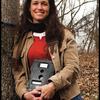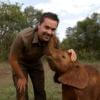Sensors already equip a range of tools to enhance monitoring capacity for conservation. Some of the higher bandwidth technologies, like camera traps and acoustic monitoring systems, have been essential elements of the conservation toolkit for decades, and thus have enough users that we've created dedicated WILDLABS groups to address them. But a whole range of lower bandwidth sensors beyond these core technologies are being increasingly integrated into conservation monitoring systems, and offer rich new insights into the wildlife and ecosystems we're all working to protect. As with many technologies, cost and access have historically been challenges to the adoption of new sensors, but with low-cost and open-source solutions on the rise, we're excited to see what the future of this space holds.
Getting Started with Sensors:
- Watch Shah Selbe's Tech Tutors episode on scaling FieldKit, an open-source conservation sensor toolbox, from a project to a successful conservation tech product.
- Check out our Virtual Meetup about Low-Cost, Open-Source Solutions in conservation tech, including a talk by Alasdair Davies on the Arribada Initiative's work with thermal sensors in early warning systems.
- For a more in-depth introduction, watch the first video in our datalogger mini-series: Freaklabs: How do I get started with Arduino?
In this group, you'll meet others who are using and innovating diverse sensors in their work, discuss ways to make sensors more effective & accessible for conservationists, learn about what sensors are already helping us accomplish in the field, and have the opportunity to ask and answer questions. Join this group to get started!
Header image: Emma Vogel, University of Tromsø
No showcases have been added to this group yet.
Samantha is a founding member and runs the Kelp Forest Foundation which looks to fill the gaps in the science around kelp cultivation.
- 0 Resources
- 1 Discussions
- 1 Groups
Wildfowl & Wetlands Trust (WWT)
Technological support in WWT's Conservation Evidence Department - recently made redundant
- 0 Resources
- 2 Discussions
- 5 Groups
University of Melbourne
- 0 Resources
- 4 Discussions
- 7 Groups
Retired engineer, with long term interest in ecology and all things tech.
- 0 Resources
- 1 Discussions
- 6 Groups
World Wide Fund for Nature/ World Wildlife Fund (WWF)
- 0 Resources
- 0 Discussions
- 8 Groups
- 0 Resources
- 1 Discussions
- 1 Groups
CSIR-Central Scientific Instruments Organisation
- 0 Resources
- 1 Discussions
- 2 Groups
- 0 Resources
- 2 Discussions
- 10 Groups
- 0 Resources
- 0 Discussions
- 8 Groups
Columbia University
Graduate Student in the department of Anthropology
- 0 Resources
- 0 Discussions
- 12 Groups
- 0 Resources
- 3 Discussions
- 3 Groups
- 0 Resources
- 6 Discussions
- 4 Groups
A comprehensive aerial survey of whales and dolphins off the coast of South Africa supported by a range of organisations including Fauna & Flora International (FFI) has recorded an astounding 1,106 southern right...
22 November 2018
Although invaluable for conservation and ecological research, camera traps frequently take pictures of people as well as wildlife. This has important implications for privacy and human rights and may ultimately...
22 November 2018
Ted Schmitt joined us for a lunchtime lecture in which he shared his experiences working across Africa the past five years with protected area managers, anti-trafficking organisations, and scientists to effectively...
22 November 2018
Rangerbot, an underwater drone that can accurately identify and fire an injection into crown-of-thorns starfish, is ready to be put to the test on the Great Barrier Reef. The concept for RangerBot won the 2016 Google...
18 September 2018
NASA and The Bureau of Ocean Energy Management (BOEM) have launched the Next Generation Animal Tracking Ideation Challenge, seeking your ideas for how to use emerging SmallSat/CubeSat technology along with other Space,...
14 September 2018
Technology now frequently used in wildlife conservation is evolving at a rapid pace, with improvements promised to make research applications and integration with other technology easier, faster, and smarter. In this...
23 August 2018
Article
In this case study, conservation ecologist Ayesha Tulloch takes us behind the scenes of her recent paper, which came out in Nature Ecology & Evolution earlier this month. In this paper, Ayesha and her team present a...
20 August 2018
The winners of our Human Wildlife Conflict Tech Challenge are offering regular updates throughout the year to chronicle their failures, successes and what they learn along the way as they develop their solutions. In...
27 July 2018
As people continue to move into natural habitats, conflicts between human beings and wildlife continue to rise. Although there are a number of early-detection systems and tools in place to prevent human-wildlife...
5 June 2018
Increasingly complex research questions and global challenges are driving rapid development, refinement, and uses of technology in ecology. This trend is spawning a distinct sub‐discipline, dubbed “technoecology” by...
9 May 2018
This month, we're following along with the scientists and engineers from the Simons Collaboration on Ocean Processes and Ecology (SCOPE) and the Monterey Bay Aquarium Research Institute (MBARI) who working together to...
23 April 2018
Conflict between humans and wildlife is increasing as human communities expand and wild habitats are destroyed, prompting need for new mitigation techniques. As a winner of the Human Wildlife Conflict Tech Challenge,...
19 April 2018
August 2025
event
September 2025
event
March 2026
July 2021
December 2020
June 2020
17 Products
Recently updated products
121 Products
3 R&D Projects
84 Organisations
Recently updated products
Recently updated R&D Projects
Recently updated organisations
| Description | Activity | Replies | Groups | Updated |
|---|---|---|---|---|
| Have you ever wanted to get a sample from the top of a tree, without having to climb it or shoot it out with a shotgun? Would it... |
|
Sensors | 4 years 9 months ago | |
| Hello Rob, I have seen the bracelet style used on large mammals with mixed success and failure. The main considerations are terrain the animal uses, and fitting the bracelet... |
|
Sensors | 4 years 9 months ago | |
| Amazing stuff Andrew! The dips in light idea made me think of exoplanet hunting straight away! Such a cool idea!! |
|
Sensors | 4 years 10 months ago | |
| Hi Akiba No worries, thanks for responding! I'd love to delve into more detail on this once the new series has started and I have an idea of the tools and kit required!... |
|
Open Source Solutions, Sensors | 4 years 11 months ago | |
| Hi Maxine, There are pros and cons to switching regulators and linear regulators. Linear regulators "throw away" the excess voltage in order to maintain a... |
|
Open Source Solutions, Sensors | 4 years 11 months ago | |
| Hi. I've been following the opencollar initiative and was wondering what the current status is. The project looks amazing! |
|
Sensors | 5 years ago | |
| Hi all, Some ETAG rfid-readers developped by Eli Bridge et al. are now avaible at https://www.labmaker.org/collections/earth-and-ecology/products/etag. The price is high,... |
|
Sensors | 5 years ago | |
| Hi all, Some ETAG rfid-readers are now avaible at https://www.labmaker.org/collections/earth-and-ecology/products/etag. The price is high, though: USD139. Yvan |
|
Sensors | 5 years ago | |
| I'd love to chat more! I'll be reaching out soon! |
|
Sensors | 5 years 1 month ago | |
| Yes im hoping the power bank and a few extra mp3s will get it done this year. will look into a better system this winter now that I have some help:) |
|
Sensors | 5 years 3 months ago | |
| Please see my edits above |
+4
|
Sensors | 5 years 3 months ago | |
| We are developing a Raspberry Pi 4 sized SDR --- frequency range 20Mhz-6GHz. Rx Sensitivity around 120 --- higher is possible with some... |
|
Sensors | 5 years 3 months ago |








































